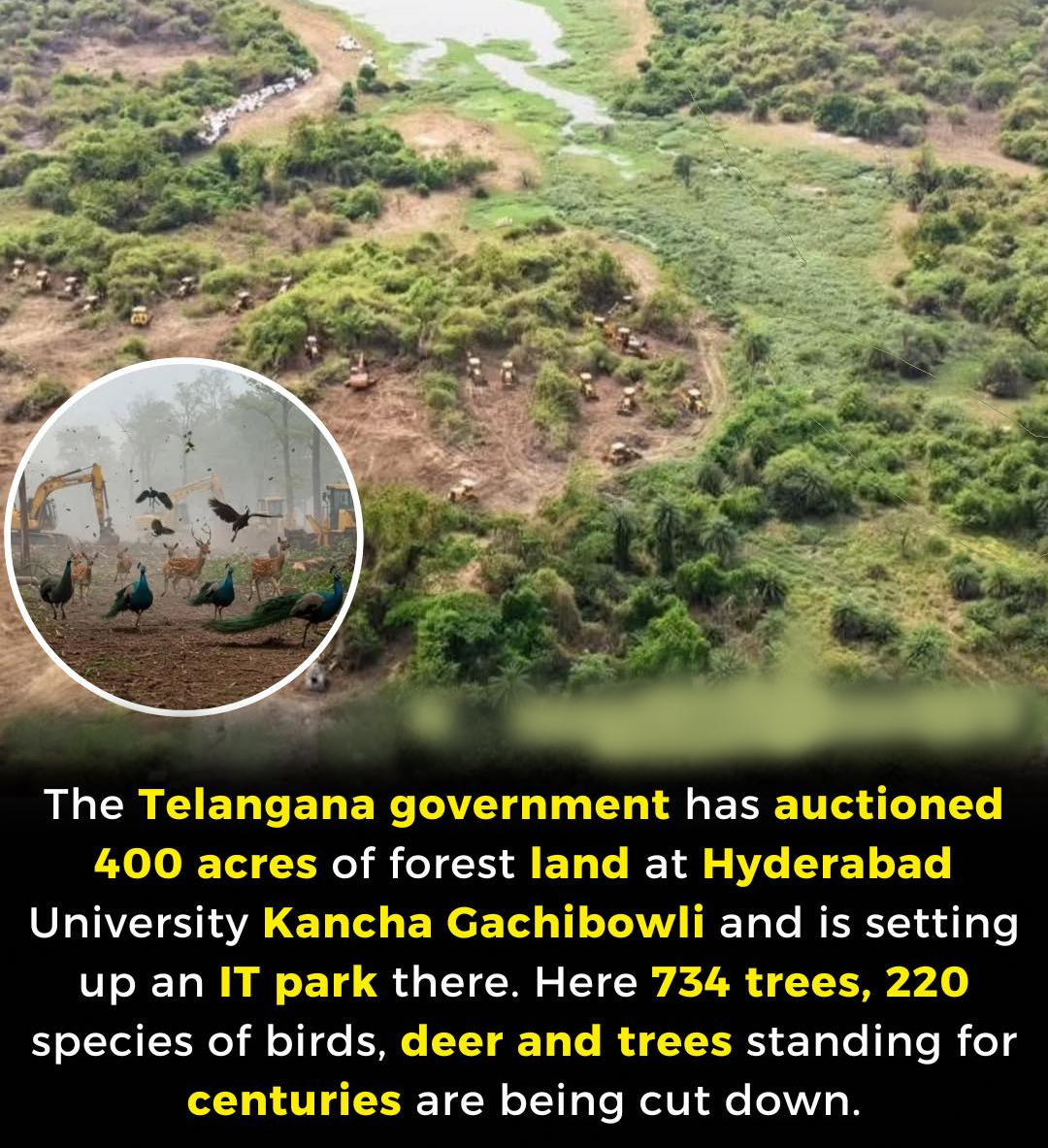Context
On April 3, 2025, the Supreme Court of India intervened in a highly contentious issue regarding the deforestation activities in the Kancha Gachibowli forested area in Hyderabad, directing the Telangana government to halt its plans to clear the land for development.
Background:
The order came in response to growing concerns about the environmental impact of the government's decision to auction 400 acres of forested land adjacent to the University of Hyderabad (UoH) for IT park development.
The Significance of Kancha Gachibowli
Kancha Gachibowli is a unique and ecologically rich area that stands out as one of the few remaining urban forests in Hyderabad. It boasts a diverse range of flora and fauna, supporting various bird, mammal, and reptile species. The area also contains remarkable rock formations, adding to its natural beauty.
Urban forests like Kancha Gachibowli play a critical role in regulating local climates by providing shade, reducing temperatures, and increasing humidity—functions that are vital for maintaining the ecological balance in rapidly growing cities.
The Telangana Government’s Plan and Justification
The government’s rationale for clearing the land is twofold: to generate substantial revenue—estimated at Rs 50,000 crore—and to create up to 5 lakh jobs by developing IT parks on the site. Hyderabad’s Gachibowli area is one of the city's most expensive locales, and the government sees the auction as an opportunity to capitalize on this prime land.
The Telangana Industrial Infrastructure Corporation (TGIIC), which is managing the project, has proposed a development layout that includes green spaces and preserves some of the area’s iconic rock formations, such as the 'Mushroom Rock.
Legal Disputes:
The 400 acres in question were initially part of a larger 2,300-acre land parcel allotted to UoH when it was established in 1974. While the UoH has used portions of this land for various academic and infrastructure purposes over the years, the state government is the legal owner of the entire parcel. Despite this, the 400 acres have never been officially demarcated as forest land, nor have they been notified as a protected forest area. This distinction is at the heart of the legal dispute, as activists and student groups argue that the land qualifies as “forest land” under the Supreme Court’s landmark 1996 ruling in T N Godavarman Thirumulpad v. Union of India, which held that land with forest cover qualifies as a forest, even if it is not formally notified.
Possible Future Outcomes
In the wake of the Court's ruling, Telangana Chief Minister A. Revanth Reddy announced the formation of a ministerial group to consult with all stakeholders involved in the dispute. The group will engage with UoH’s executive council, civil society organizations, and student delegations to explore potential solutions.
Conclusion
The struggle over Kancha Gachibowli is not just about 400 acres of land—it symbolizes the larger battle between rapid urbanization and environmental conservation. As cities like Hyderabad continue to grow, the question of how to balance development with ecological preservation will become even more pressing. The ongoing legal proceedings and protests highlight the importance of protecting green spaces, especially in urban environments where they play a critical role in climate regulation.









